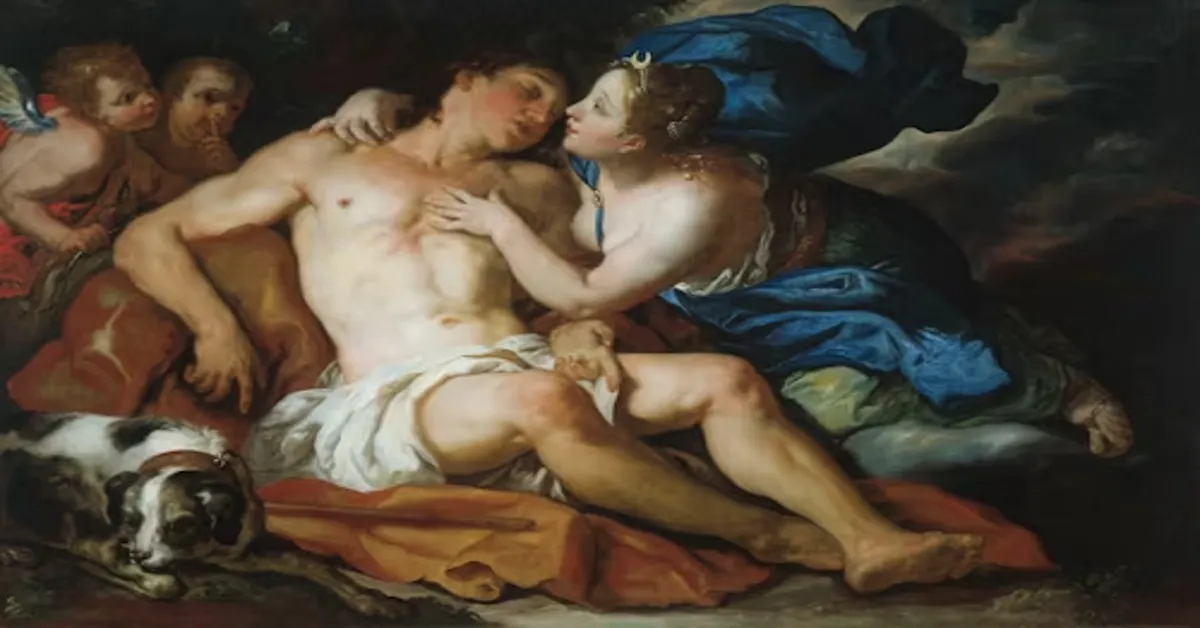Stories have long been a powerful way for people to explore fantasy, emotion, and identity. In the realm of adult literature and erotica, one particular genre that has gained visibility and curiosity in recent years is the world of cuckold stories. These narratives are often surrounded by misunderstanding, taboos, and even ridicule. However, when looked at with intellectual clarity and emotional maturity, cuckold stories represent more than just titillating fiction—they are psychological portraits, explorations of relationship dynamics, and a window into deeply personal human desires.
The topic of cuckoldry can evoke different reactions in people. For some, it is an uncomfortable subject linked with jealousy or betrayal. For others, it is an exciting narrative of submission, power exchange, and erotic exploration. Regardless of one’s personal preferences, understanding cuckold stories from a broader literary, psychological, and social perspective helps demystify the genre and reveal its value in the human storytelling tradition.
This comprehensive guide will delve into the historical roots of cuckold stories, their evolution into modern erotica, the psychological elements involved, different types of narratives, and why they continue to captivate readers in a world where sexuality and identity are more openly discussed than ever before.
What Are Cuckold Stories?
At their core, cuckold stories revolve around a central theme: a committed romantic or sexual partner (traditionally the male in heterosexual relationships) experiences or willingly accepts the idea of their partner engaging in sexual activity with someone else. This plot point is often filled with complex emotional dynamics such as jealousy, arousal, humiliation, pride, compersion (pleasure from a partner’s pleasure), or a combination of them.
These stories are not just about infidelity. In fact, many cuckold stories take place in consensual non-monogamous relationships where the “cuckold” partner is fully aware and often complicit in the events. Sometimes the emphasis is on domination and submission; other times, it’s about vulnerability, psychological surrender, or even voyeurism. Depending on how the story is framed, it may be romantic, erotic, dramatic, or even comedic.
The genre is highly flexible and open to interpretation, allowing writers and readers to engage with it in many different ways. For some, it’s a private fantasy. For others, it’s a legitimate lifestyle or identity. But for many, cuckold stories simply serve as a safe space to explore taboo thoughts that would be difficult or impossible to act out in real life.
Historical Context and Origins
While the term “cuckold” may feel like a modern invention in today’s internet-driven world, it actually has deep historical roots. The word comes from the cuckoo bird, which is known for laying its eggs in the nests of other birds. The metaphor was applied to men whose wives were suspected of infidelity, often suggesting they were unaware of the betrayal—raising someone else’s child without knowing it.
In medieval and Renaissance literature, the figure of the cuckold was often portrayed with a mixture of ridicule and sympathy. Classic literature and theater have included cuckold characters for centuries—consider Shakespeare’s use of the trope in plays like Othello, where jealousy and suspicion play tragic roles. Back then, cuckoldry was more about dishonor and shame within social and patriarchal systems that placed a premium on a man’s control over his wife and household.
As societies evolved and gender roles became more fluid, the meaning of cuckoldry shifted from a mark of shame to a niche form of erotic storytelling and even relationship choice. In the 20th and 21st centuries, especially with the rise of the internet, cuckold stories found new audiences in erotic literature, forums, and multimedia, allowing individuals to engage with the theme in a safe, anonymous, and creative way.
The Psychology Behind Cuckold Narratives
One of the reasons cuckold stories are so compelling is that they deal with powerful emotional and psychological themes. These are not superficial tales of sex alone. At a deeper level, they explore vulnerability, trust, betrayal, submission, domination, self-worth, and identity.
1. Erotic Humiliation and Power Exchange
For many, the core appeal lies in erotic humiliation—the idea of giving up control, status, or sexual dominance. In this setting, the cuckold character may find arousal in being denied or in seeing their partner find pleasure with someone perceived as more virile, attractive, or dominant. This act of witnessing becomes a form of psychological surrender, satisfying a need for punishment, submission, or self-transcendence.
2. Voyeurism and Fantasy Projection
Cuckold stories often involve detailed descriptions of a partner’s activities, which ties in with voyeurism—the act of becoming aroused through watching. For readers or imagined participants, the idea of witnessing, even fictionally, can stimulate the mind in unique ways. The story becomes a stage where forbidden desires can be safely enacted without social consequence.
3. Compersion and Emotional Complexity
Not all cuckold stories are humiliating or degrading. In some cases, especially in emotionally mature narratives, the cuckold figure may feel compersion—a genuine happiness or excitement at their partner’s pleasure. These stories portray open-minded, trust-based dynamics where sexual autonomy is not only allowed but celebrated.
4. Exploration of Insecurity and Identity
On a more introspective level, cuckold stories can serve as a mirror to personal insecurities or curiosities. They may reflect feelings of inadequacy, fears about infidelity, or desires for non-monogamy. Engaging with these themes through story can help individuals better understand themselves and their relationships.
Types of Cuckold Stories
Like any genre, cuckold stories span a wide range of styles, tones, and intentions. Here are a few of the most common categories:
1. Consensual Cuckolding
In this type, the cuckolded partner consents to or even encourages their partner to engage with others. The story may focus on the emotional journey, the rules they set, and the mutual respect involved. These stories often highlight communication, agreement, and mutual satisfaction.
2. Humiliation and Degradation
These stories lean into the erotic humiliation angle, where the cuckold character is shamed, ridiculed, or even feminized by the dominant partner or the third party. The themes often involve power dynamics, dominance, and submission.
3. Revenge or Betrayal-Based Stories
In some narratives, the cuckolding occurs as a form of revenge or secret betrayal. The cuckolded partner is unaware, and the story focuses on themes of punishment, justice, or deceit.
4. Romantic or Polyamorous Narratives
Here, cuckold stories take on a more romantic or open-relationship lens. The central couple may be in a polyamorous dynamic, and the focus is on how love and sex are shared among partners.
5. Feminization and Role Reversal
These stories often involve gender play, where the cuckolded partner is not only submissive but is also encouraged or forced to adopt more feminine roles. These narratives intersect with sissy training, role reversal, and other forms of identity exploration.
Cultural Impact and Representation
With the growing visibility of diverse sexualities and relationship models, cuckold stories have begun to find their way into mainstream awareness, though often through comedy, parody, or controversy. The genre has also been misrepresented or oversimplified in some cases, reducing its depth to mere shock value.
However, in more respectful contexts, these stories are acknowledged as valid expressions of fantasy and identity, especially within communities that practice consensual non-monogamy, kink, or alternative relationship models. The rise of platforms for user-generated fiction and storytelling has empowered people to explore these themes in healthier and more nuanced ways.
Importantly, cuckold stories should be consumed with an understanding that they are fictional constructs—fantasies that do not necessarily reflect healthy or desirable realities for all individuals or couples. The key is consent, communication, and emotional safety when translating any fantasy into real-life dynamics.
Writing and Reading Cuckold Stories: A Creative Outlet
For many writers, cuckold stories are a form of self-expression. They offer a canvas for exploring vulnerability, crafting rich emotional arcs, and diving into complex relationship dynamics that are rarely seen in mainstream fiction.
Readers are equally diverse. Some are drawn to the taboo. Others appreciate the layered psychological elements. Some may be exploring their own feelings about control, fidelity, or self-worth. Whatever the reason, cuckold stories serve as a personal, private space for thought and feeling, much like any other work of fiction that deals with sensitive themes.
Writers often face the challenge of balancing realism with fantasy. The most compelling stories are those that depict characters with emotional depth, clear motivations, and a sense of authenticity—even when the scenario itself is extreme or fantastical.
Ethical Considerations and Emotional Safety
Because cuckold stories touch on sensitive emotional themes such as betrayal, humiliation, and dominance, it’s important to consume and write them ethically. That means:
- Clearly labeling content to ensure readers are prepared for what they’re about to read.
- Avoiding non-consensual portrayals unless clearly framed as fantasy.
- Being aware of stereotypes, especially those involving race, gender, and power, which can sometimes be exaggerated or misused in this genre.
- Maintaining emotional safety, especially for readers or partners who may find the themes triggering or confusing.
Fiction is a space for freedom, but that freedom comes with a responsibility to consider how stories may affect those who engage with them.
Conclusion: The Value and Meaning of Cuckold Stories
Far from being a niche or shameful corner of adult literature, cuckold stories are meaningful reflections of human psychology, fantasy, and relationship diversity. They give people a space to explore the edges of emotion—jealousy, arousal, fear, surrender—in a controlled and imaginative setting.
Whether consumed as entertainment, personal insight, or artistic expression, these stories have a place in the wide spectrum of human storytelling. They remind us that desire is complex, that love and power often dance together, and that through narrative, we can better understand ourselves—even the parts we hide.
The future of cuckold storytelling may include more inclusive characters, broader emotional landscapes, and deeper literary exploration. As society becomes more accepting of different relationship models and sexual expressions, the way we talk about stories like these becomes less about stigma and more about empathy, curiosity, and human experience.
ALSO READ: The Maryland Flag: A Bold Symbol of History, Identity, and Unity
FAQs About Cuckold Stories
1. What exactly is a cuckold story?
A cuckold story is a narrative, usually erotic, involving a character whose partner has sexual relations with another person, often with emotional or psychological dynamics like jealousy, submission, or arousal explored in detail.
2. Are cuckold stories only for people in open relationships?
No. Many people who read or write cuckold stories are not in open relationships. These stories serve as fantasy or personal exploration and don’t necessarily reflect one’s real-life relationship preferences.
3. Are cuckold stories always humiliating or degrading?
Not always. While some stories emphasize humiliation, others focus on love, trust, or compersion. The genre varies widely in tone and intent.
4. Are cuckold stories harmful or unhealthy?
When consumed responsibly and with emotional awareness, they are not inherently harmful. Like any fantasy, they can be part of healthy self-exploration when boundaries are respected.
5. Can women be cuckolds too?
Yes. While the term historically refers to men, the dynamic can apply to any gender or orientation. Stories may use different terms but can explore similar themes regardless of gender identity.









